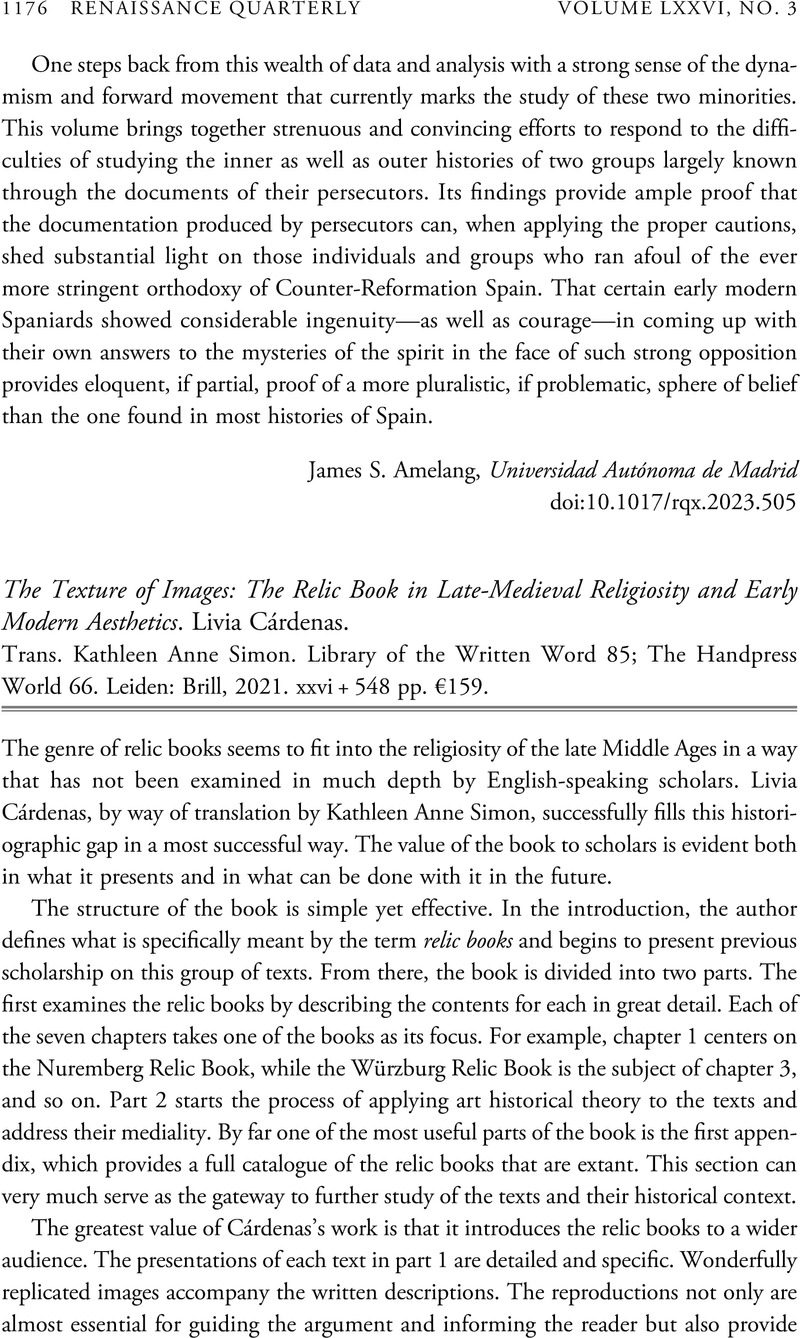No CrossRef data available.
Article contents
The Texture of Images: The Relic Book in Late-Medieval Religiosity and Early Modern Aesthetics. Livia Cárdenas. Trans. Kathleen Anne Simon. Library of the Written Word 85; The Handpress World 66. Leiden: Brill, 2021. xxvi + 548 pp. €159.
Review products
The Texture of Images: The Relic Book in Late-Medieval Religiosity and Early Modern Aesthetics. Livia Cárdenas. Trans. Kathleen Anne Simon. Library of the Written Word 85; The Handpress World 66. Leiden: Brill, 2021. xxvi + 548 pp. €159.
Published online by Cambridge University Press: 15 November 2023
Abstract
An abstract is not available for this content so a preview has been provided. Please use the Get access link above for information on how to access this content.

- Type
- Review
- Information
- Copyright
- Copyright © The Author(s), 2023. Published by the Renaissance Society of America



